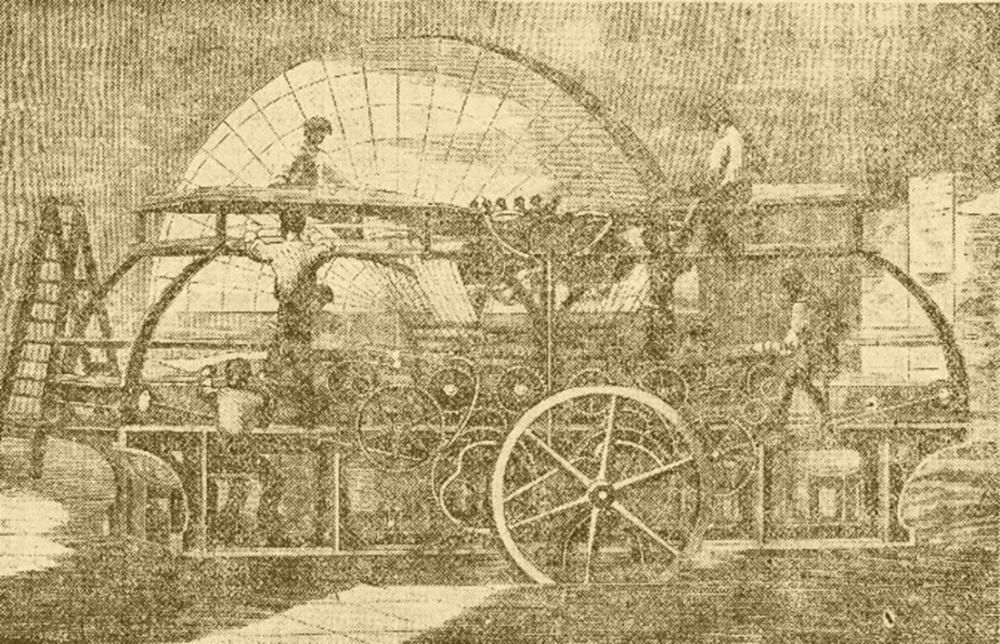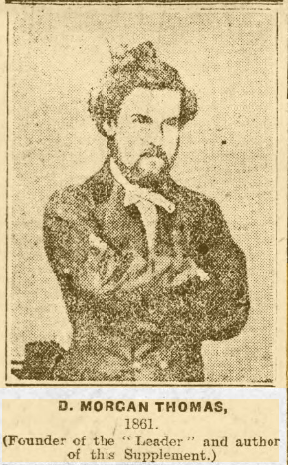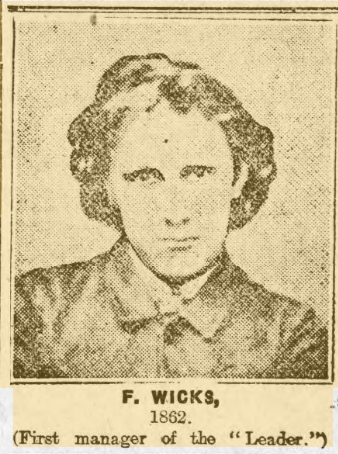The first daily newspaper in Wales

Norena Shopland
Englishman John Charles Manning (1827-1907) came to Wales in 1858 as a reporter and assistant-editor of the Swansea and Glamorgan Herald.
At various times he was editor and part-owner of the Swansea Journal, owner of the Swansea Guardian, and editor of the Cambria Daily Leader, a post he held for four years.
Having moved to London, Manning was tempted back to Wales to become the Swansea district representative of the Western Mail, which had started in Cardiff in 1869, and took the bardic name of Carl Morganwg.

In 1888, Manning wrote an article, ‘Memories of the past’ for the Cardiff Times (18 February) describing the early days of the first daily newspaper in Wales (there had been weekly papers since 1804):
“On Monday, the 20th of May, 1861, what was then known as the Cambria Daily Leader first saw the light in a dingy room in one of the narrowest, and in those days one of the dirtiest and gloomiest, streets of Swansea, known as Caer-street.
It was to cost one penny, published early every morning, and would reach all parts of Wales the same day. It was to ‘contain all the important foreign and home news, up to the hour of going to press, and its columns were to be enriched from time to time by leading articles from the pens of the most eminent living Welshmen. Its politics were to be strictly Liberal.
Evening star
Manning notes, ‘The first daily paper ever issued in Wales was not printed in Wales. Three pages of it were made up out of matter used for the Evening Star in London, the first page of the paper being left blank which we in Swansea had to supply.’
This was not unusual; most newspapers had a high content of ‘boiler plate’ stories which is why they appear almost word for word in different publications.

However, the new enterprise struggled, and it was David Morgan Thomas, son of the Rev. David Thomas, of Stockwell a rising young barrister, who came to the rescue aided by his young manager, Frederick Wicks (1840–1910), then only 21, who went on to became proprietor of the Glasgow Daily News.
Manning describes meeting Thomas that first night, “as down came the sheets from London in due course, the six columns of matter were made up, and proudly borne to the imposing iron on galleys by Mr Price, the immortal heading was put to the paper, bang went the mallet against the unfortunate quoins with a flourish worthy of the historic occasion, the steam had been got up in the little donkey-engine that fizzed and spluttered fussily at the end of the office, the one solitary forme was borne in triumph to the machine from which the Swansea Journal was sent to see the light”.

After just four issues, the paper was threatened with a law suit over its name, Cambrian Daily Leader, as owners of the Cambrian, another Swansea paper, threatened to sue. Wicks therefore suggested removing the ‘n’, making it Cambria.
Money
Another problem was making money. The first blank page left for Welsh news was only six columns wide, and by the time it was filled with advertisements the paper contained very little news.
If they dropped the advertising, they wouldn’t have enough money to run the paper. The only solution they decided, was to publish the whole edition themselves, every day. A daunting task, but the whole edition would now be printed in Wales.
More problems ensued. The printer, a worn-out machine that had been purchased to work off the paper, and been thrust into a little cellar, dark and damp, in the basement of the building to carry out its mechanical mission, was eternally in the sulks. It took to frequent fits of jibbing that would have disturbed the equanimity of even the saintliest saint in the calendar.
The following year, they were able to purchase a Marinoni Printing Machine.
The landlady of the premises, Mrs Hughes, keeper of an ironmonger’s shop next door, worried the combustible stock, the unreliable printer and boiler would burn the house down. Nevertheless, they prevailed.
The paper later moved to Cardiff, until returning to Swansea where it went home to die.
Located in offices in Bath-lane – it always had a Bohemian sort of taste for back streets, stuffy little rooms, and dismal cellars – it quietly breathed its last from sheer inanition brought on from want of financial food.
It was a venture bold enough in its original conception, bravely preserved against a stream of difficulties that would have swamped the hearts of a dozen ordinary men, and only failed from want of capital at the proper moment – the difficulty which all men experience who try to make bricks without straw.
The paper merged with the South Wales Daily Post and, in 1932, with the South Wales Evening Post.
In 1913, D. Morgan Thomas gave an extensive biography of the paper in the Cambria Daily Leader, 18 July 1913.
Support our Nation today
For the price of a cup of coffee a month you can help us create an independent, not-for-profit, national news service for the people of Wales, by the people of Wales.




